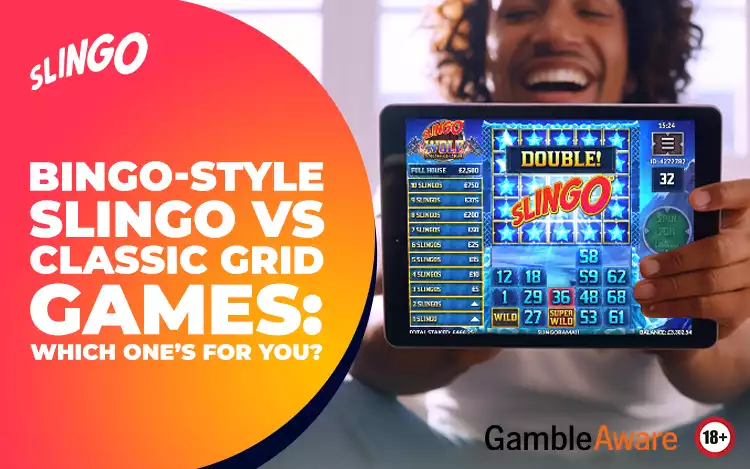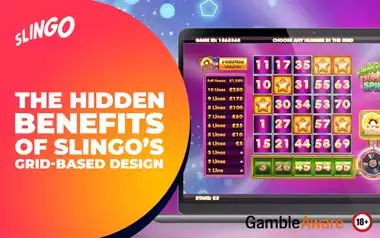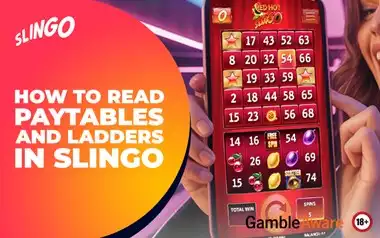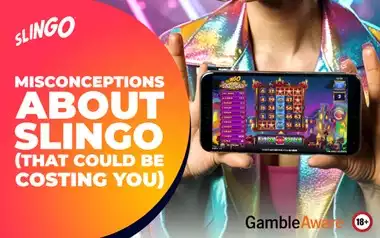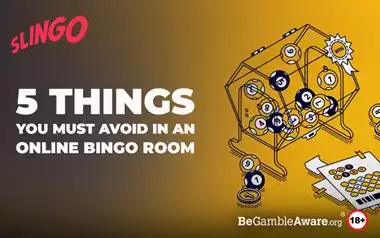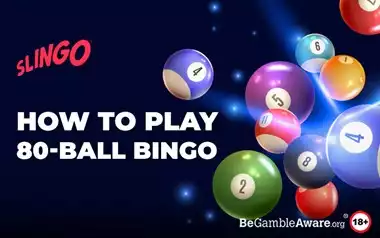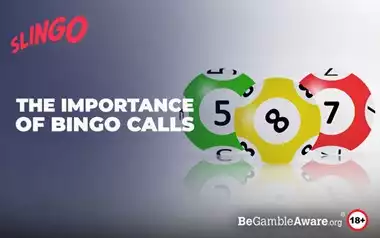If you’ve played slingo games before, you’ll know they come in more than one style. While the classic grid format might be the first image that comes to mind, five columns, five rows, and the art of lining up Slingos, there’s also a lively bingo-ticket variation that changes the pace completely. Both share the same core aim: mark numbers, complete lines, and aim for the best prize ladder possible. But the experience, pace, and even strategy can feel surprisingly different.
This guide cuts through the jargon to explain the two main Slingo styles: bingo-ticket games and the classic grid. We’ll cover how each works, the pros they offer, and when you might prefer one over the other. By the end, you’ll have a clear idea of which format suits your playing style, or whether mixing them up is the way forward.
*Terms and conditions apply.*
Two Formats, One Brand
Slingo began life in the mid-90s as a fresh combination of slots and bingo. The original setup was simple yet addictive in a healthy, non-compulsive way: spin reels to reveal numbers, mark them off on a 5x5 grid, and work towards filling lines. It was a solo experience you could control, making it distinct from traditional bingo’s set calling times.
As the brand grew, it realised not all players wanted the same pace or environment. That’s where the two main formats emerged:
- Classic Grid Slingo – The original single 5x5 grid where spins and wilds create a straightforward yet strategic game.
- Bingo-Style Slingo – A bingo-ticket variant that often runs in shared rooms with numbers being “called” in real time.
Both are unmistakably Slingo in design but cater to different moods. The grid is private, deliberate, and often linked to themed bonuses. Bingo-style is social, quick-moving, and closer to the traditional bingo hall vibe, only with Slingo mechanics layered in.
This split has allowed Slingo to appeal to both fans of focused solo play and those who prefer a bit of community atmosphere.
What Makes Bingo-Style Slingo Unique
Bingo-style Slingo swaps the single grid for multiple bingo tickets. Numbers are called (often via a spinning mechanic), and they’re automatically marked off on your tickets. You can choose to play with a few tickets for slower, more measured gameplay, or ramp it up with multiple cards for more marking action per round.
The Social Element
One of the standout features is the live chat. You’re often playing in a room with dozens of others, sharing congratulations when someone lands a big line or full house. This creates a buzz that feels closer to a real bingo session.
Ticket Variety and Strategy
Choosing ticket numbers adds a layer of strategy. Fewer tickets mean less to keep track of and a slower pace; more tickets bring more chances to win but require faster reactions. It’s pure luck; wilds still give you choices about which numbers to mark.
Example from Slingo Originals
Games like Slingo Bingo integrate the ticket format with special Slingo reel features. You might have jokers appear that let you pick any number, or extra spins that keep your round going. This creates a fusion of traditional bingo flow with the signature Slingo twists.
When the Grid Format Feels Better
The 5x5 grid is the foundation of Slingo’s history, and it’s still the go-to format for many.
Control and Focus
With the grid, you’re the only one influencing the pace. You decide when to spin, which numbers to mark with your wilds, and whether to buy extra spins to chase a near-miss line. This makes it ideal for players who want time to think between moves.
Themed Bonus Rounds
Grid-based games often come with extra features tied to a theme.
- Slingo Centurion includes pick-a-prize mini-games inspired by the popular slot.
- Slingo Deal or No Deal offers a “choose the box” round after your spins.
These bonuses add variety without breaking the core Slingo flow.
For a full rundown of how these formats compare, check out our bingo vs slingo game breakdown.
Try Both - Here’s What to Expect
Choosing between bingo-style and grid Slingo isn’t about declaring a “winner”—it’s about matching your mood.
When to Choose Bingo-Style
- You like real-time games with social interaction
- You enjoy juggling multiple tickets
- You prefer fast, constantly active gameplay
When to Choose Grid Format
- You value control over pacing
- You enjoy themed bonus rounds
- You prefer focusing on one playing area at a time
Many players alternate between the two. For example:
- Start with a few rounds of Slingo Starburst (grid) for a calm, focused warm-up
- Switch to Slingo Bingo for the buzz of shared play
- Wrap up with Slingo Sweet Bonanza (grid) for a slot-crossover finale
If you’re curious about the deeper nuts-and-bolts, our article on mechanical distinctions from slots and bingo covers how Slingo’s features differ from standard bingo or slots.
Why Many Players Stick With Both
Plenty of players find value in switching formats depending on the day. Bingo-style offers immediacy, community, and the fun chaos of managing multiple tickets. Grid games offer precision, pacing, and usually more thematic extras.
The skill required shifts slightly between the two. Bingo-style is more reactive; you adapt to the flow of numbers being called. The grid gives you more direct decision-making, especially when wilds appear. Learning both can make you a more versatile player overall.
For more ideas on what to try next, explore our iconic grid-based Slingo options.
Final Thoughts
Bingo-style Slingo and classic grid games both carry the brand’s signature blend of chance and choice. The difference lies in the environment, social versus solo, fast-paced versus measured.
If you’re brand new, starting with the grid helps you grasp the mechanics. Once you’re comfortable, bingo-style adds a fun layer of interaction and energy. In the end, the best approach might be not to choose at all, alternate between the two to keep your sessions varied and engaging.
Whether you’re playing for the structure of the 5x5 or the lively chaos of tickets, Slingo.com has you covered with a growing library of formats designed to suit every playing style.
